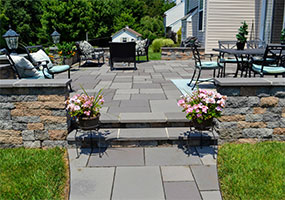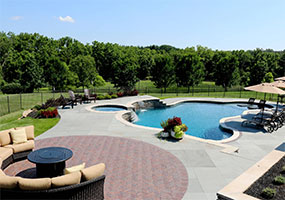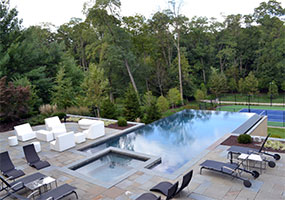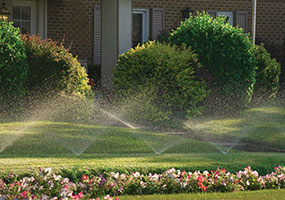Stone and Paver Patios
Newsletters | 07.01.18
If you are considering expanding your outdoor living area, a stone or paved patio provides a rock solid solution that will stand the test of time. By using masonry as your building material, you establish a permanent foundation for a living space that can grow as you see fit.

Style-wise, there are many paved or stone surfaces to choose from. Natural field stones can provide an organic puzzle-like look while uniform paver stones create a more exact feel. Stamping effects can allow poured concrete to appear as expertly laid pavers. There are even permeable paver stones that allow rain to drain right through them – preventing drainage problems before they begin.

In addition to durability, stone or paved patios offer the practical benefit of being flush to the ground. Raised decks have their own benefits, but a paved surface is set directly into the ground, creating easy access from all directions.
Whether installing a small seating area or an extensive outdoor living room, paved surfaces make your new hardscaping a long-lasting investment. A wide variety of these surfaces are available and many are more affordable than you would think.

Quick Tips for Summer Watering
YOUR LAWN
During the growing season, your turf needs an average of 1″ to 1 1/2″ of water per week from rainfall and/or sprinkling. You should water deeply, but not too often, since deep watering encourages deeper rooting and better health. It’s best to soak the soil to a depth of 6″ each time, and you should try to water early in the morning to avoid evaporation. Give extra attention to hot or dry areas along pavement or in full sun, as well as slopes and hillsides.

| YOUR TREES AND SHRUBS If your trees and shrubs don’t receive enough water this summer, they may end up wilting, losing leaves and suffering permanent damage. A long, slow watering once per week should be enough to keep them properly irrigated. Soaker hoses or low, wide-area sprinklers are ideal for watering your trees and shrubs during the summer, but be sure to leave them in place three times as long as you do when you water your lawn or flower beds. |
